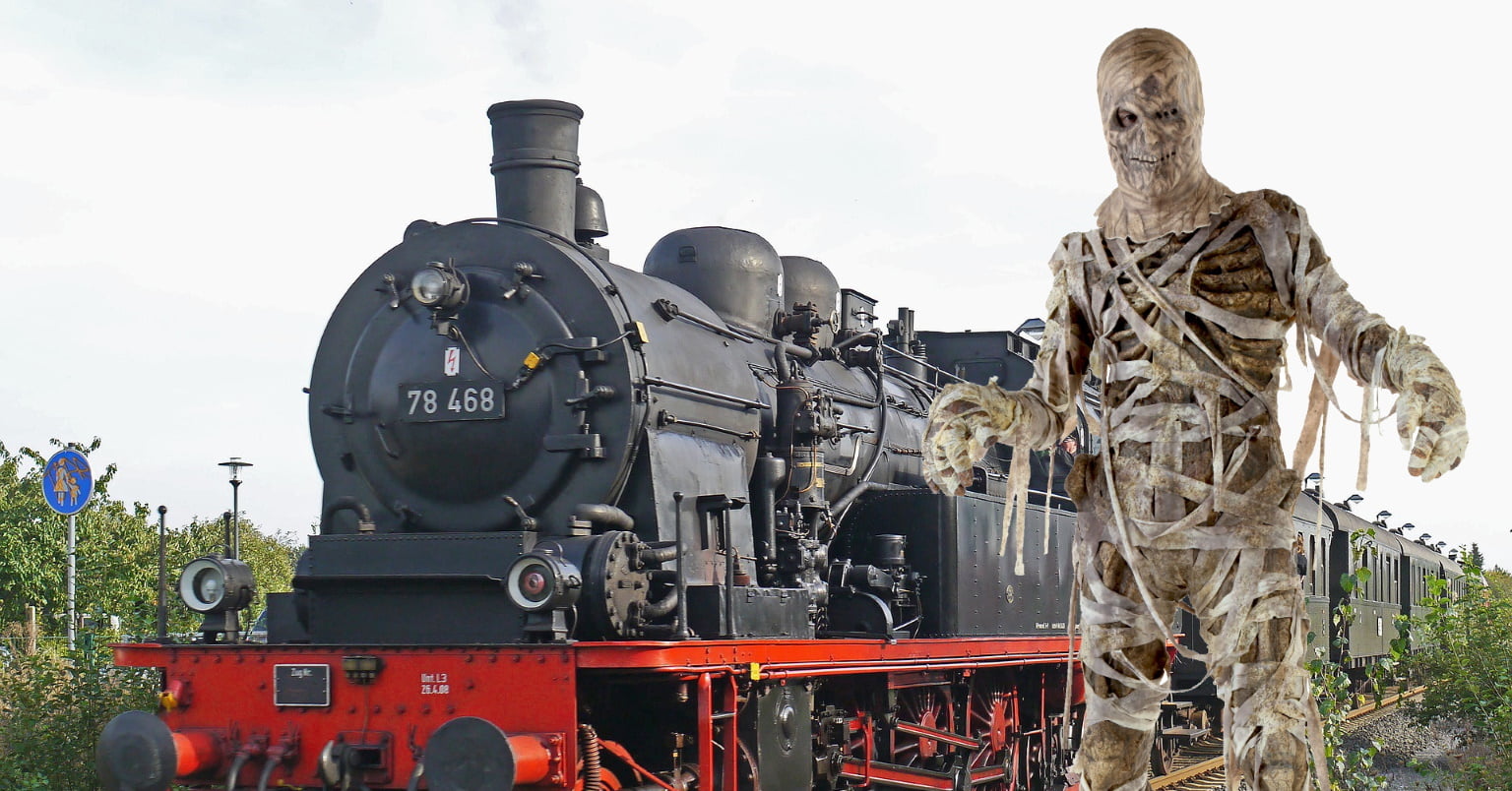According to widespread information, during the era of active exploration of the treasures of ancient Egyptian civilization, the British found practical use for numerous mummies. We checked to see if this was the case.
This is what Pyotr Obraztsov writes in his book “The world created by chemists: from the philosopher’s stone to graphene”: “...The number of mummies of people and animals found in modern Egypt is so great that on the first Cairo-Alexandria railway in Africa, steam locomotives were first drowned by these mummies! Several million of them have been dug up or taken out of caves.”
Similar information can be read in the book by Ari Turunen "The World History of Arrogance, Arrogance and Snobbery", where this practice is cited as a clear example of the embodiment of the stereotype about the “superiority of European civilization.” Dmitry Puchkov (Goblin) spoke about the unworthy behavior of the English colonialists in his series "Intelligence Questioning". This information is also popular in social networks.
How known, mummification in Ancient Egypt was a common procedure associated with the religious beliefs of local residents: a person’s immortality depended on the material safety of his body. However, ordinary does not mean cheap and simple. Experts removed the brain, placed the internal organs in ritual vessels, treated the body with natron (a type of soda) and wrapped it in linen bandages and shrouds, under which religious texts and amulets were placed - a process that took up to 70 days. The matter concerned not only people: more than a million mummies of animals considered sacred were found in Egypt - mainly cats, but also bulls, crocodiles and ibises.
And although professional study of Egyptian mummies started It was not until 1901 that their ubiquitous presence could be felt by almost any visitor to Cairo. To do this, there was no need to open the tombs, it was enough to just walk along the streets:

Since ancient times, both the owners and the main ethnic group have changed more than once in Egypt. Therefore, it is not surprising that by the middle of the 19th century, the dried remains of local aborigines did not carry the same sacred meaning for the inhabitants of the country and the unceremonious treatment of them did not evoke thoughts of blasphemy. Website mentalfloss.com gives nine examples of the use of mummies, some of which may challenge even our main topic. Namely: raw material for medicine, base for paper, object of entertainment at a social party (unwrapping mummies), base for paint for painting, decorative home decoration, stage props, portable fundraising exhibit and fake remains of other people. The latest practice was remembered for a rather curious case when what was officially considered the ashes of Joan of Arc for a century and a half, in 2007 it turned out a human rib and a femur from a cat from the Egyptian Late Kingdom.
And starting in 1848, newspapers began talking about new uses for Egyptian mummies. February 1 small American publication Wachusett Star reported, that the European powers intend to build a railway in Egypt as part of the overland route to India, and since “there is very little fuel in this part of the world, to get around the problem, one daring politician suggested using mummies that fill the local mysterious giant tombs to move steam locomotives.” It was further stated that before the mummies were used, their bandages were removed and sent to France for the production of newspapers (one of the above, but unproven applications of mummies - raw materials for paper).
The next time newspapers turned to a sensational topic was in 1859, when articles in the Syracuse Daily Standard, readers learned that mummies were used "in the first running of the steam locomotive" in Egypt and that "the supply of mummies is almost inexhaustible." Similar information was published in the magazine the same year Scientific American with reference to a “foreign correspondent,” although, most likely, the previous article served as the basis, since all the details in the two notes coincided.
And finally, ten years later, the most famous reference to the use of mummies as locomotive fuel appeared. The famous American humorist Mark Twain, in the “Egyptian” chapter of his book “Innocents Abroad, or the Path of New Pilgrims,” dedicated to his travels through the countries of the Old World, reported:
“I won’t talk about the local railway, because it is no different from any other railway, I’ll just say that the fuel for the locomotive is mummies from three thousand years ago, bought in tons, or even in entire cemeteries, and that the wicked driver sometimes shouts with annoyance: “Go to hell with them, these plebeians, they’re not worth a penny’s worth of heat! Throw in more pharaohs.”
Below is remark: “Relayed to me as a fact. What I bought for is what I sell for. I personally am ready to believe this. I can believe anything."
This not entirely serious book, whose total circulation today amounts to millions, has probably become the main source of dissemination of the curious legend. However, detailed study on this topic, conducted by archaeologist Chris Elliott of the University of Southampton, shows that coal supplies from Britain to India via the Isthmus of Suez (the canal was opened only in 1869) were established long before the first local railway line from Cairo to Alexandria opened (1856). Coal stations to service maritime trade between the empire and its colony were actively operating in Port Said and Suez, and even in the 1920s and 1930s, when oil became the main raw material for fuel, supplies of the former “black gold” to these parts continued on an industrial scale. Locomotives and rails for Egypt's railways were supplied from England, so it would be logical to add coal to them. Moreover, as Elliott notes, machinists and engineers should have known about the historical (if not monetary) value of mummies and could, in case of precedents, report this to their superiors. The practice of a century and a half ago (in quite civilized times) should have been reflected elsewhere than in a few run-of-the-mill American newspapers. So the rumors about the use of mummies as fuel in British steam locomotives are most likely fiction.
Most likely not true
Read on topic:
1. Bandages, Bitumen, Bodies and Business – Egyptian mummies as raw
materials
2. 9 Strange Uses for Ancient Egyptian Mummies
3. Do Egyptians burn mummies as fuel?
4. Mark Twain. "Innocents Abroad, or the Path of New Pilgrims"
If you find a spelling or grammatical error, please let us know by highlighting the error text and clicking Ctrl+Enter.







